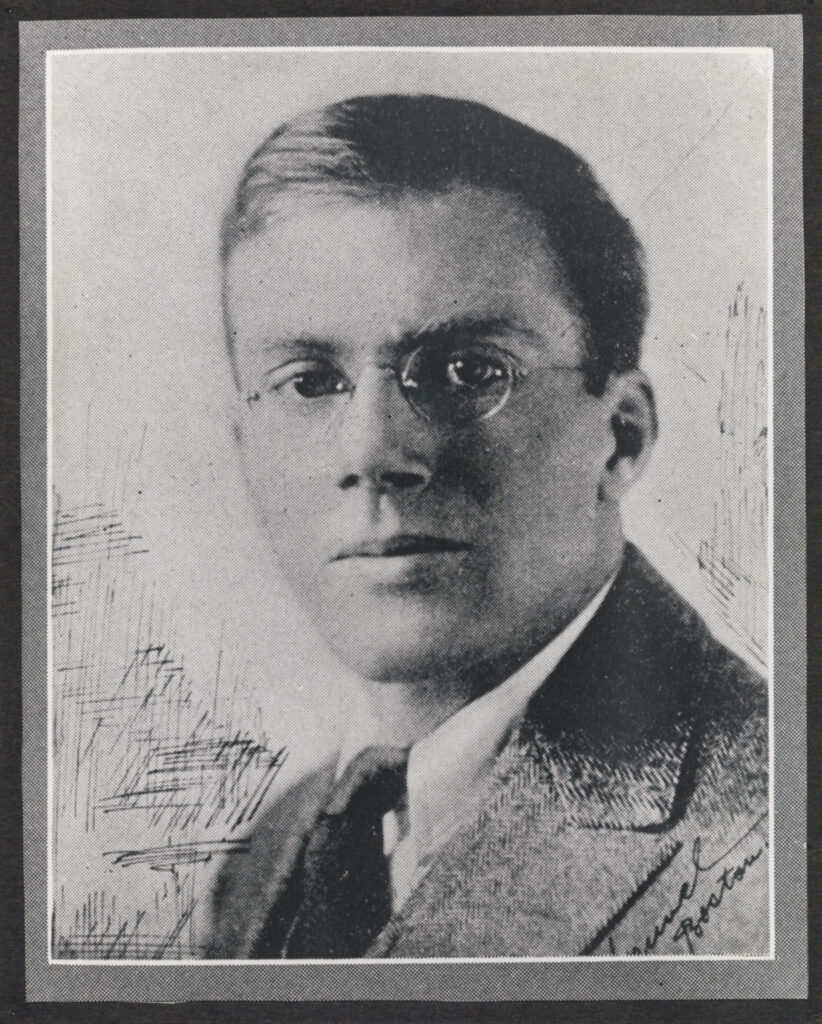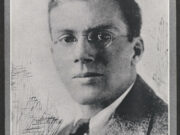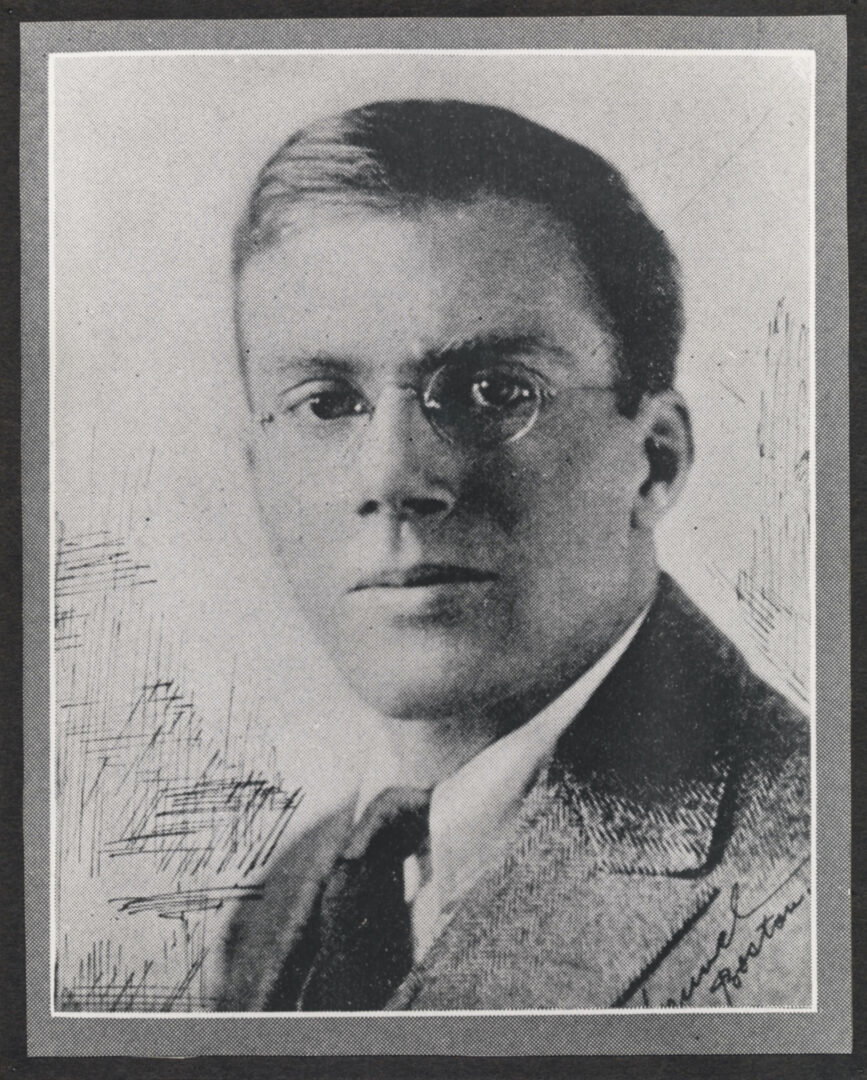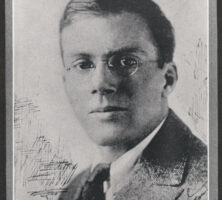Over a period of nearly fifty years Conrad Aiken published poems, essays, short stories, novels, and literary criticism. He won a Pulitzer Prize in 1930 for Selected Poems (1929) and a National Book Award for Collected Poems (1953). His literary autobiography, Ushant, reveals the international nature of his complex life and literary career.
Conrad Potter Aiken was born in Savannah, Georgia, on August 5, 1889, the eldest of four children of a prominent doctor from New York, William Aiken. The author’s mother, Anna, was the daughter of a prominent Massachusetts Unitarian minister. When Aiken was eleven, Aiken’s father killed his wife and then shot himself—without any warning. The young Aiken was sent to live with an aunt in Cambridge, Massachusetts. He later attended Harvard University, where he met the young T. S. Eliot, who became a lifelong friend and literary associate.
Aiken married Jessie McDonald in 1912. They had three children but divorced in the late 1920s, after they had settled in England.
Early Career
Aiken’s earliest poetry was written partly under the influence of a beloved teacher at Harvard, the philosopher George Santayana. This association shaped Aiken as a poet who was deeply musical in his approach and, at the same time, philosophical in seeking answers to his own problems and the problems of the modern world. After 1960, when his work was rediscovered by readers and critics, a new view of Aiken emerged—one that emphasized his psychological problems, along with his continuing study of Sigmund Freud, Carl G. Jung, and other depth psychologists. Two of his five novels deal with depth psychology.

In the 1920s Freud himself knew of Aiken’s novels and wanted to psychoanalyze the poet. Aiken actually embarked for Europe on a visit to see Freud. Aboard ship, however, he met one of Freud’s disciples, Erich Fromm, who cautioned against psychoanalysis unless Aiken seriously needed it. Aiken took Fromm’s advice and thus never met Freud, the psychologist who influenced him more than any other modern thinker.
Aiken remained private about his psychological problems, which grew largely out of the trauma of his parents’ death. Such problems emerge clearly in two of his most famous stories, “Strange Moonlight” and “Silent Snow, Secret Snow.” Aiken’s second wife, Clarissa M. Lorenz, vividly described in her book Lorelei Two: My Life with Conrad Aiken the psychological difficulties the author had in the 1930s, when the couple was living in England. She wrote of having once saved the poet from suicide.
Yet in this same period Aiken was making progress in finding new depths of creativity. He had established himself in a home in Rye, England, and had met and begun to influence the young English writer Malcolm Lowry, who later wrote Under the Volcano, a semiautobiographical novel about Aiken and Lowry in Mexico. One of Aiken’s best poems, “The Poet in Granada: Homage to Lorca,” was inspired by the two poets’ visit to Spain during the 1930s.
An American Man of Letters
In 1937 Aiken divorced Clarissa and married Mary Hoover, an accomplished painter. The couple lived in Rye until the beginning of World War II (1941-45), when they returned to America and settled in a house on Cape Cod, in the small town of West Brewster, Massachusetts. Aiken no longer sought his chief inspiration in Great Britain, Spain, and France, though he continued to have readers in those countries. With new poems about his native country’s past and present, he at last gained an American audience.
In 1952 Aiken published a spiritual autobiography describing his destroyed childhood in Savannah, his journey to Europe, and his rediscovery of a new America during and after World War II. Dedicated to Mary and to a literary friend, Edward Burra, Ushant contains the most profound statement Aiken made about himself during a writing career of more than fifty years. The book contains brilliant portraits of the literary scene in Boston, London, and New York during the first half of the century. But essentially it recounts—in prose that often becomes deeply poetic—the poet’s literary pilgrimage. Ushant and other works that followed brought Aiken into the company of the American literary establishment and earned him the kind of recognition his admirers had always thought he deserved. He received, among other honors, the position of consultant in poetry to the Library of Congress.
Aiken did not, however, become simply another literary figure of the Northeast. In the early 1960s he was offered the opportunity to live free of charge in his parents’ house on Oglethorpe Avenue in Savannah—directly across from the Colonial Park Cemetery, where Aiken had often played as a child. He chose instead to live next door at 230 Oglethorpe Avenue.
Legacy
Aiken and his wife Mary became significant figures in the life of Savannah. They entertained many visitors, including a number of scholars and authors who sought out Aiken and talked with him at great length. When T. S. Eliot died in 1965, Aiken wrote a memorable article in Life magazine about his friend’s place in modern literature. Aiken’s final book, a collection of religious poems entitled Thee deals in part with his own literary and religious pilgrimage.
Before he died Aiken had a marble bench erected next to his parents’ graves in Savannah’s Bonaventure Cemetery. It contained two epitaphs: “Give my love to the world” and “Cosmos Mariner Destination Unknown.”
Six months before Aiken’s death on August 17, 1973, Governor Jimmy Carter appointed him poet laureate of the state of Georgia. In front of the house on Oglethorpe Avenue, a historical marker describes Conrad Aiken’s life and work. In 2003 Aiken was inducted into the Georgia Writers Hall of Fame.






